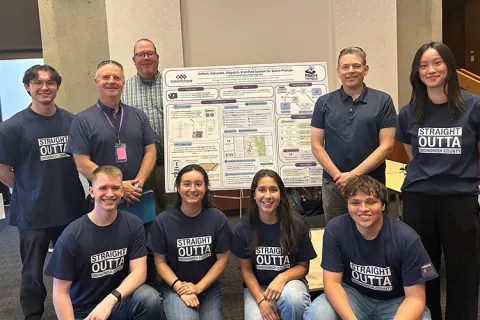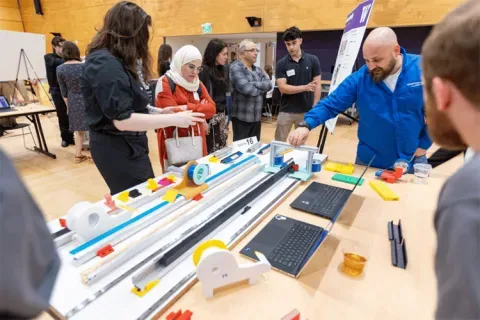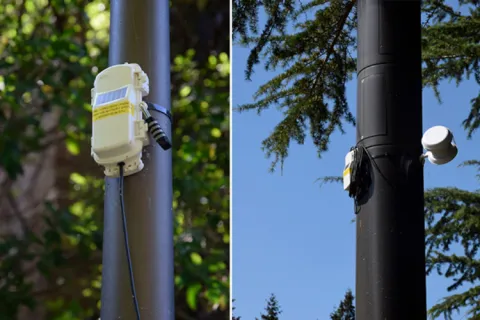Boeing
Mechanical Fixture Development for Surface Treatment of Thermoplastics
Proper surface preparation is vital for proper bonding during manufacturing rework and field repairs. A plasma treatment can aid significantly but must be carefully controlled to ensure adequate speed, standoff, and coverage across a range of aircraft surface curvatures and orientations. A UW capstone project last year considered several design alternatives and selected a potentially viable solution using a belt gantry system. The lab-tested prototype resulted in several recommendations for improvements for future consideration, including the use of custom software for better UI, better wheel design, improved tolerance control and additional safety features. This student team worked to incorporate these recommendations and fabricate a mechanical fixture with an increased readiness level for practical use on airframe structures. They created a proof-of-concept demonstration of the fixture – one that demonstrates the fixture’s capabilities to raster a curved aircraft surface (or an equivalent composite panel) with a portable compact plasma nozzle system within the specified surface treatment parameters.
Faculty Adviser(s)
Eli Patten, Mechanical Engineering
Related News

Mon, 10/13/2025 | UW Mechanical Engineering
Capstone collaboration leads to award
An ME capstone team received first place for its energy audit of the UW School of Social Work building.

Thu, 07/17/2025
UW engineering students develop smart ballot solution
UW engineering students develop smart technology solution to improve ballot collection for Snohomish County.

Mon, 07/07/2025 | UW Mechanical Engineering
Capstone creations
Students displayed innovative capstone design projects at the 2025 expo.

Fri, 09/20/2024 | UW Civil & Environmental Engineering
Smarter irrigation for a greener UW
A new project combines satellite data with ground sensors to conserve water and create a more sustainable campus environment.